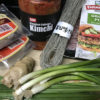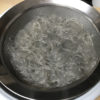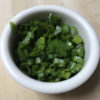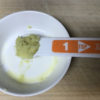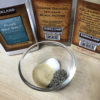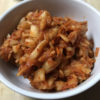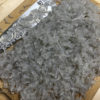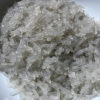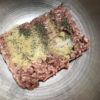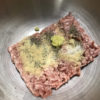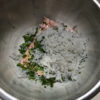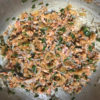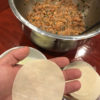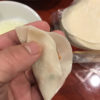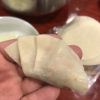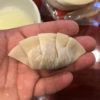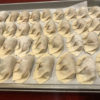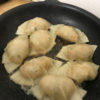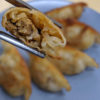Mandu was always one of my favorites growing up. The crispy skin with the steamy flavorful filling. I’d always burn my mouth eating these fresh out of the pan because I’d gobble them up so fast, but I couldn’t help it ’cause it was soo good. Here is the recipe we used but you can add other fillings to your desire. This is a great way to use up old kimchi.
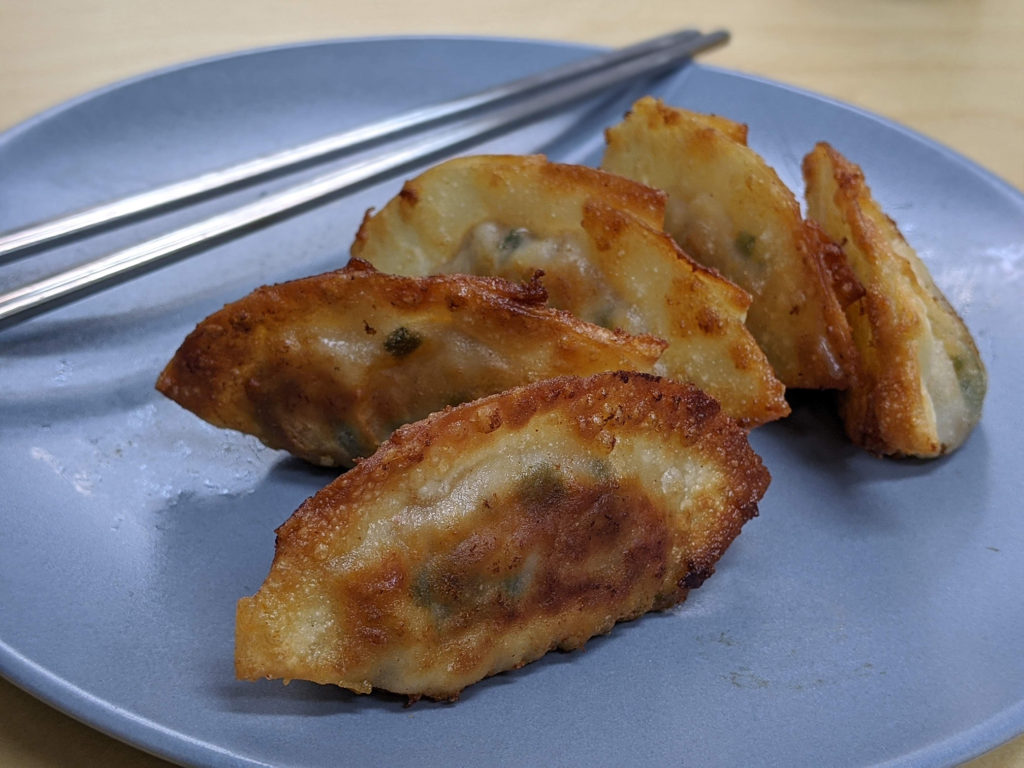
Makes about 80 – 100 mandu
Ingredients
- 1 1/2 cup Sohi Kimchi
- 2 packages of Pot Sticker Wrappers
- 1 lb lean ground pork
- 1 cup asian chives
- 1 1/2 cup of clear noodle
- 1/2 cup chopped scallions
- 1 teaspoon fresh ginger
- 1 teaspoon black pepper
- 1 teaspoon granulated garlic
- 1/2 teaspoon salt
- 1 egg (for egg wash)
Directions
- In a pot of boiling water add the dry clear noodle. Boil the noodles until the noodles are soft and tender. The noodles should not be al dente.
- Drain the noodles and set aside.
- Grate 1 teaspoon of ginger. You can use more ginger if you like the flavor.
- Chop the scallions, chives, and noodles into very small pieces. The pieces should be roughly a half a cm in diameter.
- Chop the kimchi into similar pieces but make sure you squeeze out the kimchi juice from the kimchi. We do this to reduce liquid from being added to the filling so the mandu doesn’t steam and pop open when cooked.
- Add pork to a mixing bowl with the black pepper, granulated garlic powder, salt, ginger, chives, scallions, noodles, and kimchi.
- Mix with hands until all ingredients are thoroughly incorporated.
- Create an egg wash. Crack the egg and separate the yolk from the egg white. In a bowl mix the egg white with the same volume of water. Mix until the whites are broken up.
- Cover a baking tray with some parchment paper. (The parchment paper will keep the mandu from sticking to the tray later on)
- Put one wrapper in your palm and brush the edges of the wrapper with the egg wash, approx 1 cm.
- Spoon a small amount of filling into the center of the wrapper. Make sure the filling is in an oval shape. Use the ends if the oval as guides to where you what the ends of the mandu to be.
- If you don’t really care about the presentation of the mandu you can simply fold over the wrapper and line up and pinch the edges creating a half circle. Read below for Optional Pleat Wrapping.
- As your mandu is filled and folded, place finished mandu on the baking sheet with parchment paper.
- Once the baking sheet is filled, place the baking sheet with mandu in the freezer.
- Once the mandu has become stiff you can put them in an ziplock freezer bag and left in the freezer until you want to fry them up.
Frying Instructions
- Coat the bottom of a frying pan with oil.
- Add a tablespoon of water.
- Place frozen mandu on the pan and cover the pan with a vented lid.
- Cook on high until all the water has evaporated. Lower heat to med.
- Using the remaining oil in the pan, cook both sides of the mandu until it is a golden brown.
- Place cooked mandu on paper towels to soak up some of the excess oil.
- Serve plain or with a side of soy sauce with toasted sesame seeds.
Optional Pleated Wrapping (Follow the images below as a guide)
- Holding the wrapper with filling in the palm of your hand, fold over the wrapper and pinch together one end of the mandu.
- Using the top half of your thumb, hold down the pinched end and create a pleat the length of your thumbnail using your other hand. Move your thumb and pinch down the pleat.
- Move your pinching thumb further along the edge of the mandu to create another pleat.
- Continue this process about 3 or 4 more times until the mandu is sealed.
TIps, Substitutions, and Variations
- When wrapping the mandu, make sure not to overfill the mandu or it will be too hard to close or may bust open when cooking.
- Substitute chopped shrimp or other ground meat for different flavored fillings.
- Add other veggies and spices to vary the flavor as well.
- Mandu can be eaten steamed or boiled as well.
- Add a few mandu to instant ramen or soups for an added treat.

